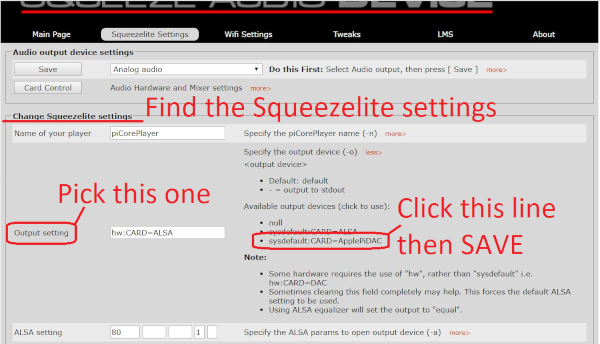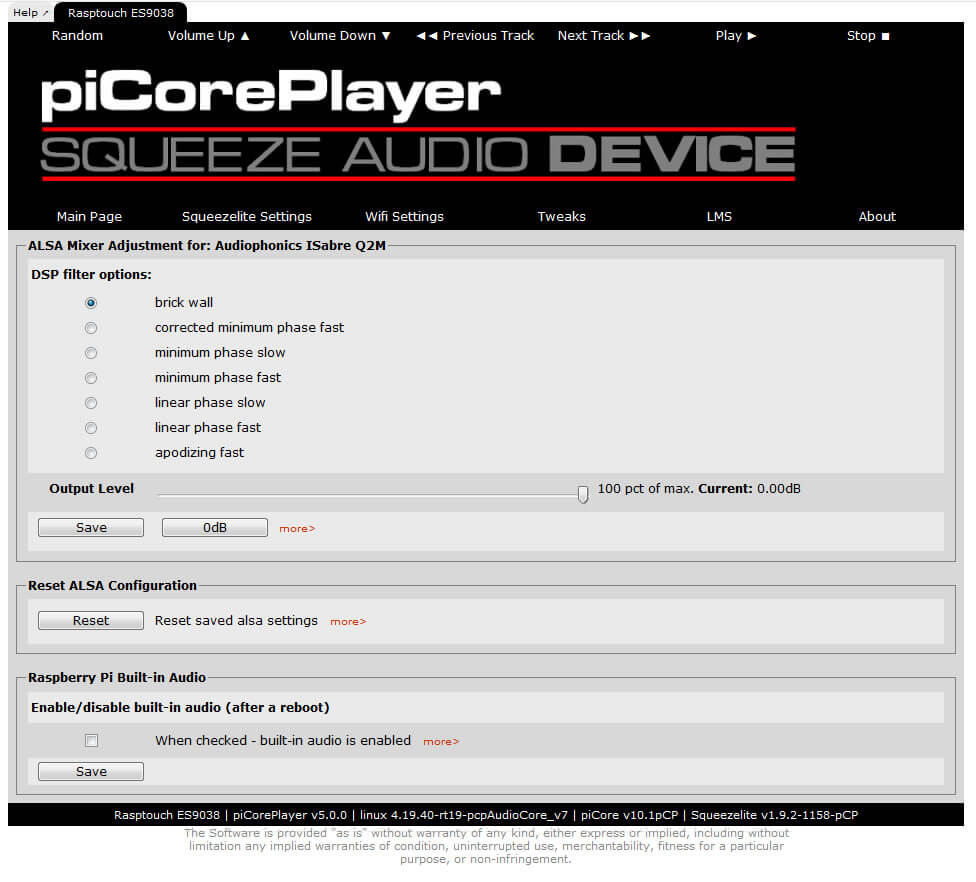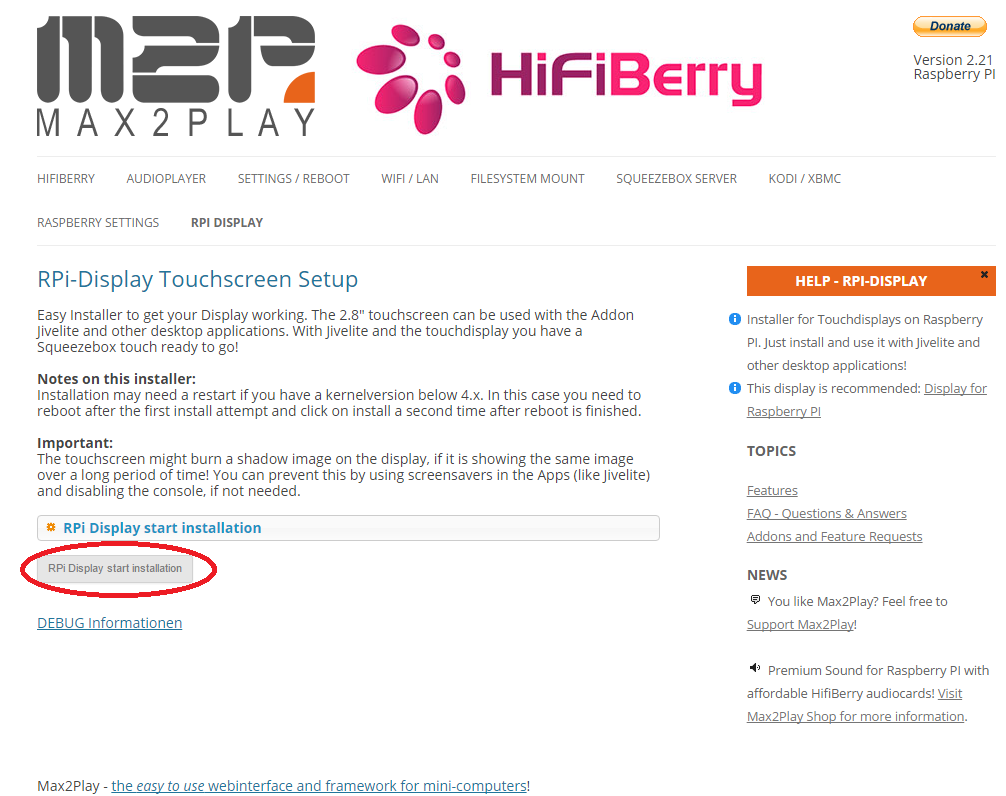
Reboot and login as non-root user: # reboot Additional information can be found here: # EDITOR=nano visudo Give sudo rights to non-root user by editing the sudoers file. Setup autologin of squeezeuer by following this guide: # useradd -m -g users -G audio -s /bin/bash squeezeuser

Ensure that it is given permission for the audio hardware.

Then generate the local information with: # locale-genĭetermine your timezone by finding the appropriate file in the timezone directory: # ls /usr/share/zoneinfo/ # ls /usr/share/zoneinfo/AmericaĬreate a symbolic link to /etc/localtime # ln -s /usr/share/zoneinfo/America/New_York /etc/localtimeĮstablish a hostname for your Pi: # echo squeezeboxPi > /etc/hostname Un-comment the appropriate locale for your country (e.g., en_US.UTF-8 UTF-8) I’ve assumed the following, that the non-root username is “ squeezeuser“, and that this user has sudo rights.įirst, set your location by opening up the list of locales: # nano /etc/locale.gen There is a lot of good information on setting up Arch available through the Arch Wiki at, but a good place to start is the Arch Beginner’s Guide available here. Prepare your media and copy the image file to your media as provided in the Raspberry Pi instructions here.
Jivelite setup install#
Install Arch Linux First, acquire the Raspberry Pi flavor of Arch Linux from here: Arch is a great distribution on which to learn, and the Arch community is second to none when it comes to providing helpful and clear advice. The output will be in a text file and you should copy this information into /etc/X11//nf. xinitrc file in the squeezeuser’s home directory. Finally, you will need to calibrate your touchscreen by uncommenting the xinpu_calibrator line in the. As delivered, the image uses the Lilliput xorg file. One is for the Mimo screen used in this project and the other is for the Lilliput 7″ UM-70/C/T MiniUSB Touch Screen Monitor. There are two examples in the /home/squeezeuser/ directory.

You will also need to copy the appropriate xorg config file to /etc/X11//nf.
Jivelite setup password#
You will need to change the root password (currently “root” and the squeezeuser password (currently “squeeze”). Unzip the file and write it to a SD card (2GB or larger should work).

You may select the image for the Raspberry Pi 1 or the Raspberry Pi 2. You can download the compressed image from here. Image Files Available for pi1 and pi2įor those who don’t want to build their own system up from scratch, I have created a disk image of a working system.
Jivelite setup software#
First, prepare the Raspberry Pi to run the appropriate software to connect to the music server and display the interface and second, install the hardware in the wall. In addition, I’ve used a Rosewill powered USB hub to power both the Raspberry Pi and the monitor, and a T-amp amplifier to power a pair of JBL in-ceiling speakers. The parts required may vary based on what kind of a system you want but here I use a Raspberry Pi Model B and a Mimo UM-720F USB Touchscreen Display ( ).
Jivelite setup how to#
This project shows how to both build the hardware and set up a Raspberry Pi with the correct software. Since the server software is open source, and because I continue to have several network players around the house that only work off of the Logitech Media Server (originally called the Squeezebox Server), and finally because a few intrepid souls in the Squeeze forums ( ) built software emulators for a network music player and its interface I decided to put together this project. I built this project because Logitech has stopped making its “Squeeze” line of networked music players. Build a wall-mounted “SqueezePlayer”-based network music player using Squeezelite, Jivelite and a Raspberry Pi.


 0 kommentar(er)
0 kommentar(er)
